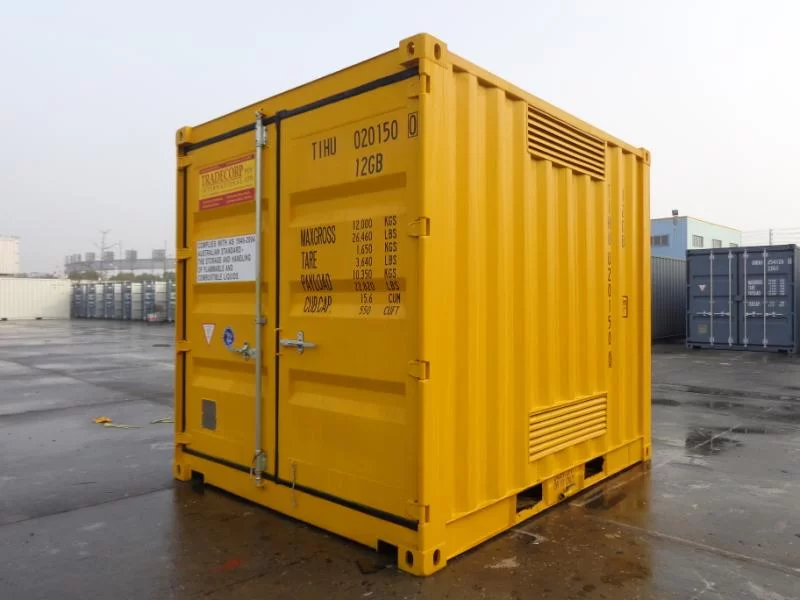Shipping dangerous goods can be a complicated and potentially dangerous process if not done correctly. Dangerous goods are items that are capable of posing a significant risk to health, safety, property, or the environment during transport. Some of the examples are chemicals, explosives, and flammable liquids.
It is the responsibility of shippers to ensure that their dangerous goods shipments comply with the relevant regulations and are transported safely. However, navigating the many regulations and requirements can be a challenging task, especially for those who are new to the industry.
It is essential to follow a set of guidelines to ensure safe and compliant dangerous goods shipping. In this article, we will outline the six essential steps that you need to take to ship dangerous goods safely and in compliance with the relevant regulations. By following these steps, you may prevent potential risks due to mishandling or incompliance.
Contents
Step 1: Determine if Your Goods are Hazardous
The first step in safe and compliant dangerous goods shipping is to determine if your goods are hazardous. This can be done by consulting with the regulations set by the International Air Transport Association (IATA), the International Maritime Dangerous Goods Code (IMDG), or the United States Code of Federal Regulations (CFR). These regulations outline the criteria for determining if a material is hazardous, as well as the proper shipping procedures for each type of hazardous material.
Step 2: Identify the Proper Shipping Name and UN Number
Once you have determined that your goods are hazardous, the next step is to identify the proper shipping name and UN number. The proper shipping name is the technical name for the hazardous material, while the UN number is a unique four-digit number assigned to each hazardous material. It is essential to identify the proper shipping name and UN number correctly, as this information is necessary for completing shipping documents and labeling the packages.
Step 3: Package and Label the Goods Correctly
Proper packaging and labeling are critical for safe and compliant dangerous goods shipping. Hazardous materials must be packaged in containers that are suitable for the material being transported and labeled with appropriate hazard warning labels. The labeling must be clear and visible to ensure that those handling the package can easily identify the contents and take appropriate precautions. It is also essential to ensure that the package is secured and does not pose a risk during transportation.
Step 4: Complete Shipping Documents
Shipping documents are necessary for tracking and identifying hazardous materials during transport. These documents include a bill of lading, hazardous materials shipping paper, or sea waybill, depending on the mode of transport. The shipping documents must contain accurate and complete information, including the proper shipping name and UN number, the quantity of the hazardous material being transported, and emergency contact information.
Step 5: Pick the Right Transportation Company
Choosing the right transportation provider is crucial for safe and compliant dangerous goods shipping. It is essential to select a provider that has experience and expertise in transporting hazardous materials and is compliant with all relevant regulations. The provider should also have proper insurance coverage to protect against any potential risks during transportation.
Step 6: Train Employees Properly
Finally, it is essential to train employees properly on the safe and compliant handling of hazardous materials. All employees involved in the transportation of hazardous materials should receive training on the proper procedures for packaging, labeling, and handling hazardous materials. The training should include information on emergency procedures and how to respond to accidents or spills during transportation.
Tips for Shipping Dangerous Goods
Besides following the six essential steps, there are also some helpful tips and considerations to keep in mind for safe and compliant dangerous goods shipping:
Stay up-to-date with regulations: Regulations for the transportation of hazardous materials can change at some point in time, so it is essential to stay informed and up-to-date on any changes or updates.
Use proper storage and handling: In addition to proper packaging and labeling, it is important to store and handle hazardous materials correctly. This includes using appropriate storage containers and keeping hazardous materials away from incompatible substances.
Communicate effectively: Communication is key when it comes to shipping dangerous goods. Make sure to communicate effectively with all parties involved in the transportation process, including transport providers, employees, and emergency responders.
Conduct regular inspections: Regular inspections of packaging and shipping containers can help identify any potential issues or risks before they become a problem. Make sure to conduct inspections regularly and document any findings.
Have a contingency plan: Even with proper planning and preparation, accidents can still happen. It is important to have a contingency plan in place in case of an emergency, including procedures for responding to spills, fires, or other incidents during transportation.
Get professional assistance: Shipping dangerous goods can be a complex process, and it may be beneficial to seek professional assistance from a hazardous materials consultant or another expert to ensure compliance and safety.
By following these additional tips and considerations, you can help ensure the safe and compliant transportation of hazardous materials. Remember that the safety of yourself, your employees, and the public should always be the top priority when shipping dangerous goods. By taking the time to plan and prepare properly, you can help prevent accidents and ensure a successful transportation process.
Purchasing a Conex Box
Tradecorp has a wide range of customization options for shipping containers for sale. We will help you find the perfect container solution for your business or project needs. Find a variety of types and sizes of shipping containers, from standard ones to tanks, and customizable ones. We will have them ready for you at the best price. Fill out the contact form on our page and we will respond to your inquiry promptly.

